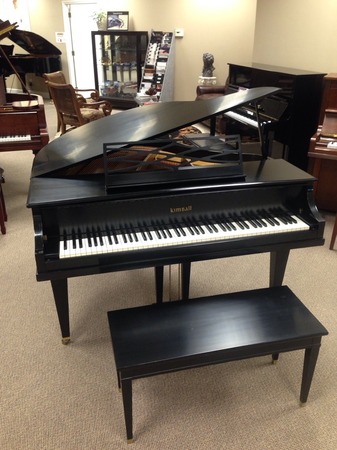

But there were many different brand names placed on the front of the pianos. Aeolian continued to build player pianos until 1982.Įarly players had the Aeolain Company name cast on the plate inside. The player piano business was tremendous before the Great Depression. They also manufactured a huge number of player pianos and supplied player actions to many other companies. In the late 1800's William Tremaine was a very successful home organ maker, selling chamber organs to the wealthy. But it was used in later years on foreign made grands and uprights. The Aeolian brand itself was never used on their instruments in the earlier years. The ability to hold a large amount capital is one reason Aeolian, Baldwin, Steinway, Kimball, Wurlitzer and a few other US piano plants survived the Great Depression of the 1930's. This was a huge amount for a piano factory to control in the early 1900's. They employed well over 5000 people and had capital of over $15,000,000. There were factories in New York, Paris, Berlin, London, Melbourne and Sydney. This brought even more piano names under the control of Aeolian. Over the next 35 or 40 years he acquired a huge number of piano names or brands. His son Harry took over in 1898 and changed the name to The Aeolian Company. William Tremaine established the company in 1887 as the Aeolian Organ & Music Co. Now the Gibson Guitar company owns the name. It changed hands 5 or 6 times in it's long interesting history. Resources on the furniture business.The Aeolian Piano Co. Meanwhile, Kimball International has focused all its Presence of other musical instruments in the market.īad that the company was forced to close down the piano and organ arm ofĪs mentioned before, the last Grand Piano is displayed in a showroom in The 1990s, sales of pianos were plummeting. They decided to leverage its popularity to On December 20, 2007, BAWAG signed an agreement to sell all stock in Bösendorfer to Yamaha, who owns the company to this present day (2017).Įxecutives at Jasper Corporation noted that the Kimball brand name was It remained Kimball's, before returning to Austrian hands, when purchased by the BAWAG PSK Gruppe in 2002. In 1966, the Jasper Corporation bought the prestigious Austrian piano maker, Bosendorfer.

Included small console and upright pianos. Produced grand pianos ranging from 135cm (4' 5") in length, to Organs and 250 pianos on a daily basis from the factory.

Subsidiary company grew so successful that they shipped 150 electric Regained its title as largest piano maker worldwide. Kimball underwent a period of rejuvenation and by 1969 had once gain Habig purchased the company in 1959 and moved it to Top piano maker in the world to the seventh. In comes the Kimball Piano Company, which was by now struggling to copeĪs a result of financial mistakes by Kimball Jr. Utilize the woodworking skills of the employees, the new expansion had The company’s production scope to guarantee stability. Through Habig’s brilliantĮntrepreneurship, Jasper Corporation rose to acquiring other furniture Their first year to millions of dollars in later years. Grew from a small corporation making a little more than $100,000 in Jasper Corporation was a contract manufacturer of furniture, founded in 1950 by Arnold Habig. Subsidiary of Jasper Corporation (1959-1996) So in 1922 after producing a total of 403,990 reed organs, Kimball halted the production of any more. In the early 1900s Reed organs wereįalling out of 'public favor' as pianos increased in popularity due to a During this time they made different types of pianos including Sales tactics made Kimball one of the top producers of pianos in the Over the next ensuing decades, superior piano quality and aggressive A massive five story factory was built for that purpose. In 1887, the company broadened its manufacturing business to This meant that the company was the largest organ maker in the world. Production underwent a quick growth spurt and soon peaked atġ5,000 organs per year. Was enough money to build a large factory for the production of reed Kimball Company was officially formed in 1882 and at this time there Organs they were selling were made wholly in-house. The company quickly grew as a manufacturer and by 1880 the Making its own instruments was in 1877 when it started assembling reed


 0 kommentar(er)
0 kommentar(er)
